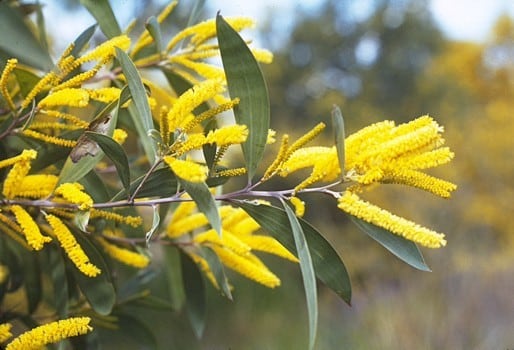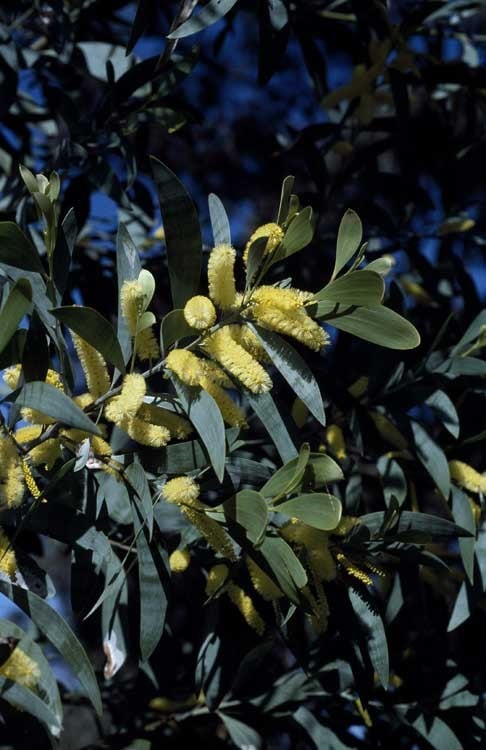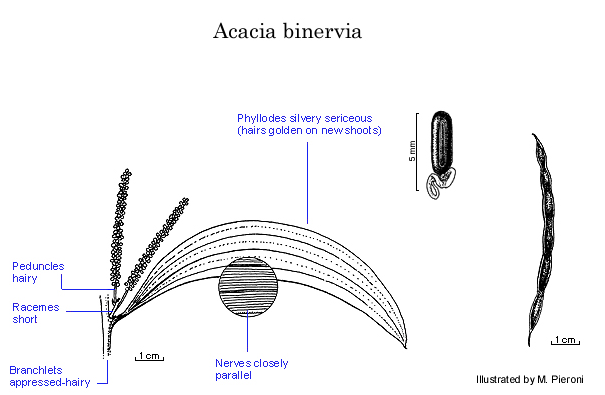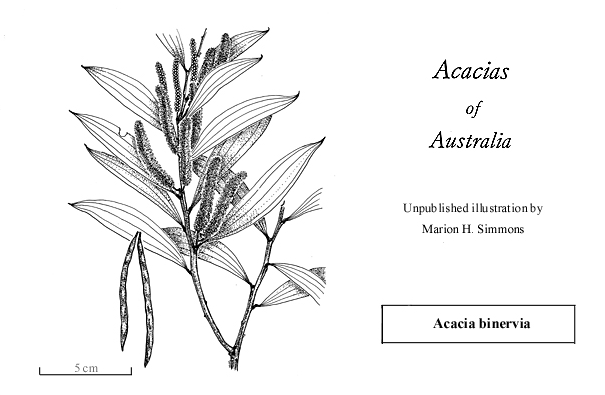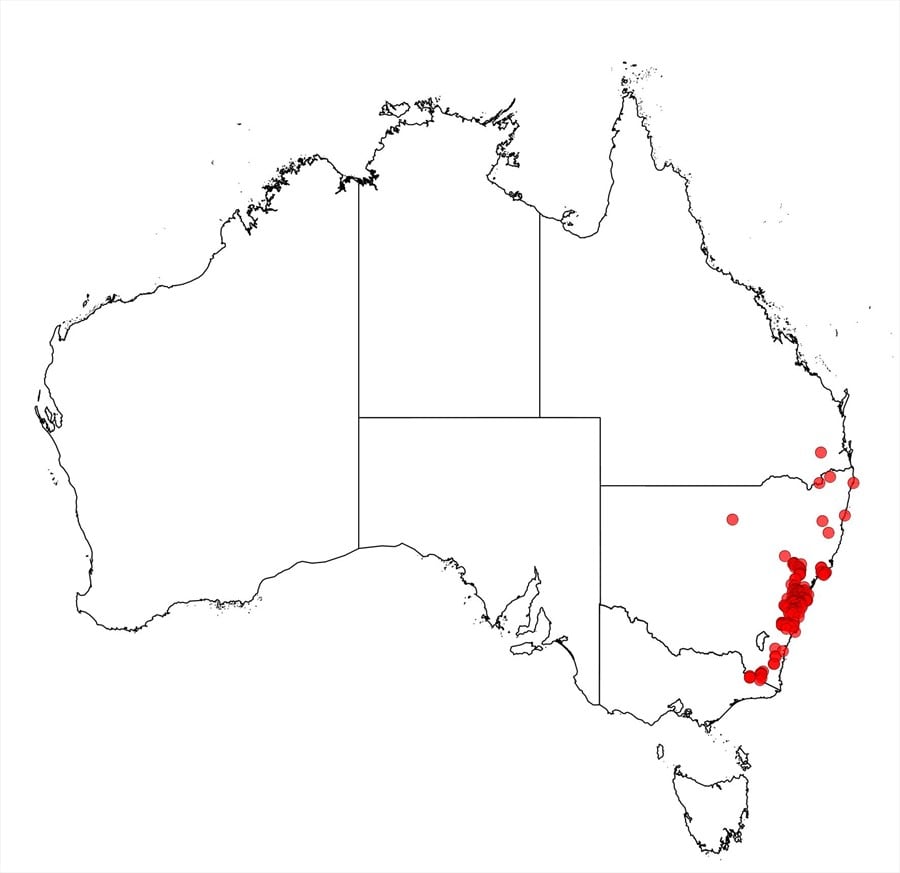Acacia binervia (J.C.Wendl.) J.F.Macbr.
WATTLE
Acacias of Australia
Common Name
Coast Myall
Family
Fabaceae
Distribution
Common on the coast, central tablelands and central western slopes of N.S.W., and on the southern tablelands inland from Bega; known in Vic. from a single collection in the upper Snowy R. area, fide T.J.Entwisle et al. Fl. Victoria 3: 602 (1996).
Description
Shrub or tree to 15 m high. Bark deeply fissured, flaky, dark grey-brown. Branchlets angular to flattened towards apex, grey or dark grey, puberulous. Phyllodes very narrowly elliptic to elliptic, mostly narrowed at both ends, flat, falcate to subfalcate or sometimes straight, normally (4–) 6–14 (–15) cm long, 7–25 mm wide, thinly coriaceous, subglaucous or glaucous, minutely silvery appressed-pubescent, with 3–5 main nerves free to base; minor nerves mostly 5–7 per mm, parallel, occasionally anastomosing; gland 1, basal, to 1 mm above pulvinus. Inflorescences racemose; raceme axes normally 1–10 mm long. Spikes 2–5.5 cm long, golden. Flowers mostly 5-merous; calyx 0.5–0.6 mm long, dissected to 1/4, yellow- to golden- or rarely white-pubescent; corolla 1.5–1.8 mm long, dissected to 1/4–1/3, glabrous or slightly hairy; ovary pubescent. Pods linear, not moniliform, straight, 3–7 cm long, sharply tapered at apex and base, ±woody, sparsely pubescent, ±resinous. Seeds longitudinal, elliptic-oblong, 4–4.5 mm long, black; pleurogram open, without halo.
Phenology
Flowers Sept. & Oct.
Habitat
Grows in dry open forest or woodland, depauperate rainforest and open scrub on rocky or stony hillsides of shale or sandstone, along watercourses or on hind-dunes of beaches.
Specimens
N.S.W.: Port Stephens, Sept. 1911, J.L.Boorman (BRI, CANB, NSW, PERTH); Nortons Basin, 2.5 km WNW of Wallacia, R.G.Coveny 11282 & P.Hind (A, AD, B, E, K, MEL, MO, NSW, P, PERTH, U, UC, US); Wheeny Ck crossing on Comeroy Rd near E Kurrajong, P.D.Hind 6702 & R.Harrison (NSW); N of Mangrove Ck, Nov. 1923, P.Murphy (NSW); Adams Lookout, SE of Morulan, R.Pullen 3914 (CANB, NSW). Vic.: Snowy R., S of Sandy Ck, 14 May 1989, J.Turner 556 (MEL n.v.).
Notes
A member of the A. cheelii group.
Young shoots are usually very densely clothed with yellow or sometimes silvery hairs. This species is toxic to livestock.
FOA Reference
Data derived from Flora of Australia Volumes 11A (2001), 11B (2001) and 12 (1998), products of ABRS, ©Commonwealth of Australia
Author
Edited by B.R.Maslin
Dr M.D.Tindale and Dr P.G.Kodela with the assistance of M.Bedward, S.J.Davies, C.Herscovitch, D.A.Keith and/or D.A.Morrison
This identification key and fact sheets are available as a mobile application:
URL: https://apps.lucidcentral.org/wattle/
© Copyright 2018. All rights reserved.


 Acacia binervia Benandarah, NSW
Acacia binervia Benandarah, NSW